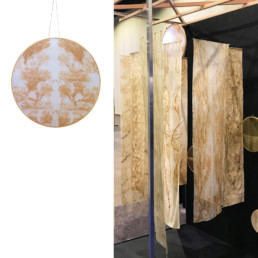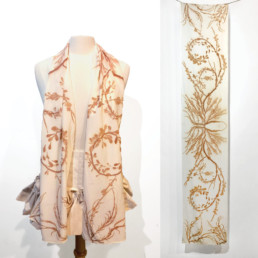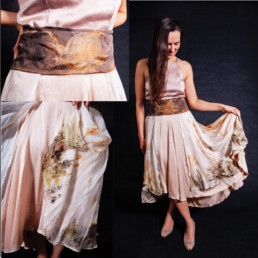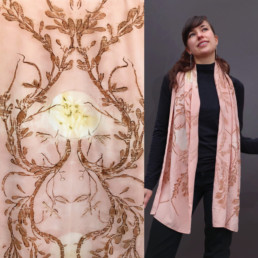Aleksandra Azbel [2014, MFA Architecture]
Our textile items such as clothes or decorations are our second skins and objects of protection and comfort. They have the ability to reinforce our sense of personal and cultural identity, and to heal our spirits, our spaces, maybe even our bodies, and certainly our ecosystems. My interest in natural dyes awoke when I first learned of the detrimental effects of the textiles industry on the waterways of Rhode Island, and my love of textiles, plants and traditions naturally propelled me to learn how cultures in the past generated colorful textile creations with plant colors. In pursuit of these interests, and in addition to balancing a career in architecture, I have spent time collaborating with indigenous communities around the world and teaching myself the knowledge and practice of natural dyes here in Rhode Island. I obtain colors local to New England through my own organic dye garden and through ecologically sensitive foraging practices. I never harvest rare or endangered plants or algae, and always leave the majority of any plant’s fruits or leaves for other species like birds and bees. It is my belief that by wearing clothes that derive their colors from the landscapes we occupy we are able to better connect and identify with those landscapes, which is important if we are to become their stewards. Simultaneously, items of international collaboration honor sustainable development and healthy cross-cultural exchange. These items are a direct result of my Fulbright fellowship in Sri Lanka, where I work with a women’s empowerment initiative, AMMA. My goal is to develop a substantial and sustainable natural dye farm in Rhode Island, while continuing to nurture connections with natural dye communities around the world. My wish is for our society to engage in a positive shepherding of our local landscapes. My belief is that our identities are interlinked with our natural world, and that textiles are an important mechanism for communicating and nurturing this connection.





